
The Cosmic Background Explorer, also referred to as Explorer 66, was a NASA satellite dedicated to cosmology, which operated from 1989 to 1993. Its goals were to investigate the cosmic microwave background radiation of the universe and provide measurements that would help shape our understanding of the cosmos.

The Spitzer Space Telescope, formerly the Space Infrared Telescope Facility (SIRTF), was an infrared space telescope launched in 2003. Operations ended on 30 January 2020. Spitzer was the third space telescope dedicated to infrared astronomy, following IRAS (1983) and ISO (1995–1998). It was the first spacecraft to use an Earth-trailing orbit, later used by the Kepler planet-finder.

The Goddard Space Flight Center (GSFC) is a major NASA space research laboratory located approximately 6.5 miles (10.5 km) northeast of Washington, D.C. in Greenbelt, Maryland, United States. Established on May 1, 1959 as NASA's first space flight center, GSFC employs approximately 10,000 civil servants and contractors. Named in recognition of American rocket propulsion pioneer Robert H. Goddard, it is one of ten major NASA field centers. GSFC is partially within the former Goddard census-designated place; it has a Greenbelt mailing address.
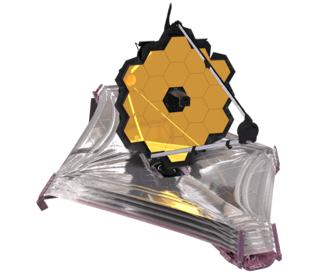
The James Webb Space Telescope (JWST) is a space telescope designed to conduct infrared astronomy. Its high-resolution and high-sensitivity instruments allow it to view objects too old, distant, or faint for the Hubble Space Telescope. This enables investigations across many fields of astronomy and cosmology, such as observation of the first stars and the formation of the first galaxies, and detailed atmospheric characterization of potentially habitable exoplanets.
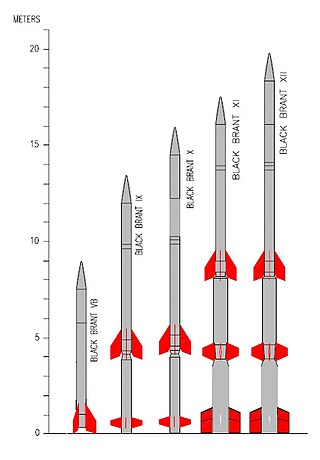
The Black Brant is a family of Canadian-designed sounding rockets originally built by Bristol Aerospace, since absorbed by Magellan Aerospace in Winnipeg, Manitoba. Over 800 Black Brants of various versions have been launched since they were first produced in 1961, and the type remains one of the most popular sounding rockets. They have been repeatedly used by the Canadian Space Agency and NASA.

NASA's series of Great Observatories satellites are four large, powerful space-based astronomical telescopes launched between 1990 and 2003. They were built with different technology to examine specific wavelength/energy regions of the electromagnetic spectrum: gamma rays, X-rays, visible and ultraviolet light, and infrared light.
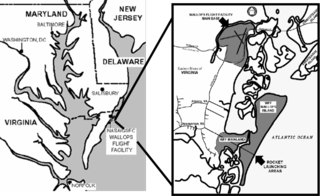
Wallops Flight Facility (WFF) is a rocket launch site on Wallops Island on the Eastern Shore of Virginia, United States, just east of the Delmarva Peninsula and approximately 100 miles (160 km) north-northeast of Norfolk. The facility is operated by the Goddard Space Flight Center in Greenbelt, Maryland, and primarily serves to support science and exploration missions for NASA and other Federal agencies. WFF includes an extensively instrumented range to support launches of more than a dozen types of sounding rockets; small expendable suborbital and orbital rockets; high-altitude balloon flights carrying scientific instruments for atmospheric and astronomical research; and, using its Research Airport, flight tests of aeronautical research aircraft, including unmanned aerial vehicles.

The Poker Flat Research Range (PFRR) is a launch facility and rocket range for sounding rockets in the U.S. state of Alaska, located on a 5,132-acre (20.77 km2) site at Chatanika, about 30 miles (50 km) northeast of Fairbanks and 1.5 degrees south of the Arctic Circle. More than 1,700 launches have been conducted at the range to study the Earth's atmosphere and the interaction between the atmosphere and the space environment. Areas studied at PFRR include the aurora, plasma physics, the ozone layer, solar proton events, Earth's magnetic field, and ultraviolet radiation. Rockets launched at PFRR have attained an apogee of 930 miles (1,500 km).

The Mid-Atlantic Regional Spaceport (MARS) is a commercial space launch facility located at the southern tip of NASA's Wallops Flight Facility on Wallops Island in Virginia, just east of the Delmarva Peninsula and south of Chincoteague, Virginia, United States. It is owned and operated by the Virginia Spaceport Authority.

The year 2008 contained several significant events in spaceflight, including the first flyby of Mercury by a spacecraft since 1975, the discovery of water ice on Mars by the Phoenix spacecraft, which landed in May, the first Chinese spacewalk in September, the launch of the first Indian Lunar probe in October, and the first successful flight of a privately developed orbital launch vehicle by SpaceX's Falcon 1.
A number of suborbital spaceflights were conducted during 2008. These consist mostly of sounding rocket missions and missile tests, and include other flights such as an ASAT firing. Between the start of the year and 16 July, at least 43 publicly announced suborbital spaceflights were conducted, the first of them on 11 January.
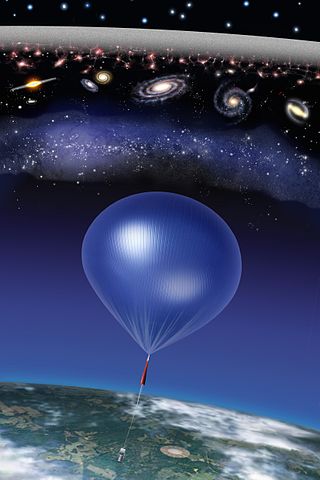
Absolute Radiometer for Cosmology, Astrophysics, and Diffuse Emission (ARCADE) is a program which utilizes high-altitude balloon instrument package intended to measure the heating of the universe by the first stars and galaxies after the big bang and search for the signal of relic decay or annihilation. In July 2006 a strong residual radio source was found using the radiometer, approximately six times what is predicted by theory. This phenomenon is known as "space roar" and remains an unsolved problem in astrophysics.

Launch Pad 0 (LP-0), also known as Launch Complex 0 (LC-0), or Launch Area 0 (LA-0), is a launch complex at the Mid-Atlantic Regional Spaceport (MARS) on Wallops Island, Virginia, in the United States. MARS is located adjacent to NASA's Wallops Flight Facility (WFF), which ran the launch complex until 2003. WFF continues to provide various support services to MARS launches under contract with the Commonwealth of Virginia.
A number of Suborbital spaceflights were conducted during 2009, consisting of sounding rocket missions and missile tests. Between the start of the year and 1 March, at least nine publicly announced suborbital spaceflights were conducted, the first of which occurred on 26 January.
White Sands Launch Complex 36 (LC-36) is a site at White Sands Missile Range used for launches of the Black Brant IX and Black Brant 9CM1. It was also used from May 1964 and January 1966 to launch the Little Joe 2 rocket for the Apollo Program.
The Venus Spectral Rocket Experiment (VeSpR) was a suborbital rocket telescope that collected data on the ultraviolet (UV) light that is being emitted from Venus's atmosphere, which can provide information about the history of water on Venus. Measurements of this type cannot be done using Earth-based telescopes because Earth's atmosphere absorbs most UV light before it reaches the ground.
Small Payload Quick Return (SPQR) is a NASA Ames Research Center concept to return small payloads from orbit.

The NASA Sounding Rocket Program (NSRP) is a NASA run program of sounding rockets which has been operating since 1959. The missions carried out by this program are primarily used for scientific research, particularly low gravity and material based research. NASA's sounding rocket program is commonly used by colleges and universities for upper atmosphere research.
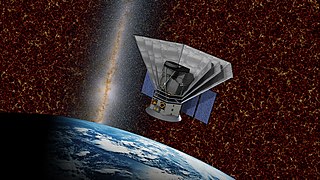
SPHEREx is a future near-infrared space observatory that will perform an all-sky survey to measure the near-infrared spectra of approximately 450 million galaxies. In February 2019, SPHEREx was selected by NASA for its next Medium-Class Explorers mission, beating out two competing mission concepts: Arcus and FINESSE. As of August 2022, SPHEREx is targeted to launch no earlier than April 2025 on a Falcon 9 launch vehicle from Vandenberg Space Force Base. The principal investigator is James Bock at California Institute of Technology (Caltech) in Pasadena, California.
Rapid Acquisition Imaging Spectrograph Experiment or RAISE is a NASA funded series of sounding rocket missions to study the Sun in extreme ultraviolet. RAISE is supported by NASA's Sounding Rocket Program at NASA's Wallops Flight Facility in Virginia. NASA's Heliophysics Division manages the Sounding Rocket Program.













